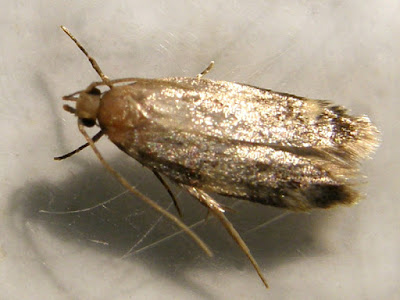I garden as much for the pleasure of the work itself as for the results; the shapes and colours, scents and tastes of the growing garden and its harvest. I just love to get my hands dirty, to dig in a shovel and turn the soil, watching the earthworms twist and squirm and head back down into darkness, to crumble friable loam in my fingers and smell its nutty aroma, to make holes and fill them with new plants, to trim and weed and prune. I love to straighten up after a few hours on my knees, holding my aching back, to stand for a bit, looking at the newly-loosened earth, the happy plants. As Mom used to say, "It's clean dirt," and so it is also "good pain."
I love the fixings: peat moss, well-aged manures, humus, fish fertilizer "tea", mulches, compost.
There's a limit to my madness. I draw the line at making "hot" compost; it needs a large pile or container; it must be turned frequently and soaked even more often; it involves heavy lifting. And I have to wear gloves. Which never, ever fit, and always irritate my hands.
So I make
lazy gardener's "cold" compost. In a back corner, behind the hydrangea, I toss all the day's clippings and cuttings and raked-up detritus, as-is, stems and sticks and all. A piece of log holds it down until the next time. Occasionally, I mix it up a bit, maybe shoving the new stuff underneath the old, maybe pulling out a few sticks from the middle and tossing them on top again. That's it. In between, I forget about it.
It takes years to build up good compost that way, but the end product is perfect, a joy to dig and to spread.
Last week, I dug up my compost pile for the first time in three or four years. I shoveled everything onto a tarp and hauled it out to the lawn to sort. Sticks, evergreen cones and unrottable rhododendron leaves here, dead nettle runners there, stones from the soil underneath over there, clean compost in a loose heap in the center. And hundreds of live critters scrambling for cover everywhere. There were sowbugs of both types; the small, panicky ones, and the big, calm ones that just roll into a ball when things get awkward. There were ants, all disorganized, looking for the way home. Earthworms and spiders, millipedes, centipedes and assorted grubs. And at least a dozen small, shiny moths.
 |
| What was this doing in a compost heap? |
I collected a moth and a few of the less frequent residents to look at later, then worked for another couple of hours weeding, raking, digging, transplanting, then finally spreading chicken manure and the compost. I cleaned up my mess and went in to examine my critter collection.
All that hard work is my excuse for what I did next; I took a couple of photos of each animal and released them without double-checking my photos. I was tired and hungry, and my back was aching, so I was careless and foolish.
 |
| Unidentified grub. There were many of these, about 1/2 inch long. |
 |
| Fat, brown grub. Unidentified. Probably something that will eat my plants. |
 |
| He's about 1 inch long, and has a series of black dots down each side. (See full-size.) |
 |
| Head end. |
 |
| Woolly caterpillar. Unidentified. |
When I looked at the photos later, I realized that I had a mystery on my hands. I'll explain that tomorrow.




















